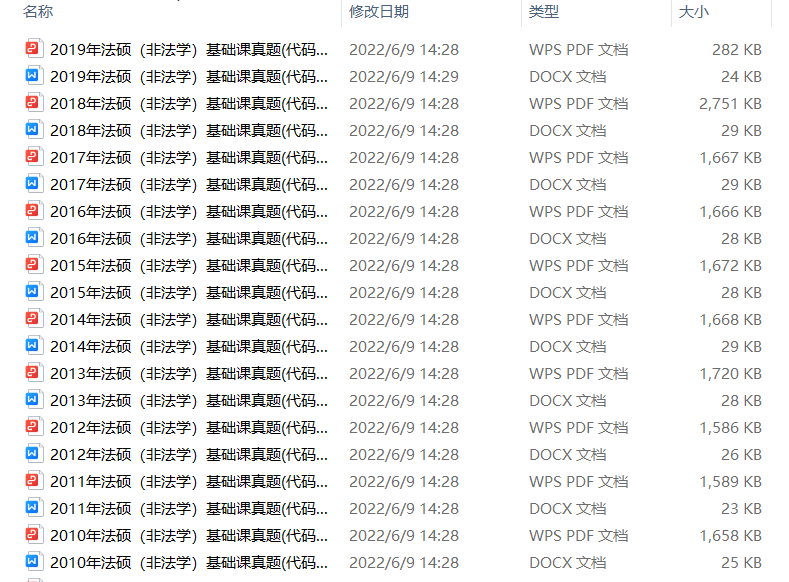特惠-26考研冲刺
特惠-27考研课
双证-在职硕士
免联考-同等学力
26考研-肖八笔记
26考研-时政刷题
26考研-作文押题
26考研-全套真题
26考研-提前估分
保研-路线图
27考研-智能择校
27考研-英语测评
27考研-新大纲对比
热门-计算机择校

扫码加入训练营
牢记核心词
学习得礼盒
考研英语作文是一个考察综合运用语言的部分,需要同学们运用逻辑思维下笔成文,因此,考前看一些意义深远、质量好的文章很有必要。以下是2015考研英语作文备考素材精选,请作参考。
2015考研英语作文素材精选 (九)
31 British Columbia
British Columbia is the third largest Canadian provinces, both in area and population. It is nearly 1.5 times as large as Texas, and extends 800 miles(1,280km) north from the United States border. It includes Canada's entire west coast and the islands just off the coast.
Most of British Columbia is mountainous, with long rugged ranges running north and south. Even the coastal islands are the remains of a mountain range that existed thousands of years ago. During the last Ice Age, this range was scoured by glaciers until most of it was beneath the sea. Its peaks now show as islands scattered along the coast.
The southwestern coastal region has a humid mild marine climate. Sea winds that blow inland from the west are warmed by a current of warm water that flows through the Pacific Ocean. As a result, winter temperatures average above freezing and summers are mild. These warm western winds also carry moisture from the ocean.
Inland from the coast, the winds from the Pacific meet the mountain barriers of the coastal ranges and the Rocky Mountains. As they rise to cross the mountains, the winds are cooled, and their moisture begins to fall as rain. On some of the western slopes almost 200 inches (500cm) of rain fall each year.
More than half of British Columbia is heavily forested. On mountain slopes that receive plentiful rainfall, huge Douglas firs rise in towering columns. These forest giants often grow to be as much as 300 feet(90m) tall, with diameters up to 10 feet(3m). More lumber is produced from these trees than from any other kind of tree in North America. Hemlock, red cedar, and balsam fir are among the other trees found in British Columbia.
32 Botany
Botany, the study of plants, occupies a peculiar position in the history of human knowledge. For many thousands of years it was the one field of awareness about which humans had anything more than the vaguest of insights. It is impossible to know today just what our Stone Age ancestors knew about plants, but form what we can observe of pre-industrial societies that still exist a detailed learning of plants and their properties must be extremely ancient. This is logical. Plants are the basis of the food pyramid for all living things even for other plants. They have always been enormously important to the welfare of people not only for food, but also for clothing, weapons, tools, dyes, medicines, shelter, and a great many other purposes. Tribes living today in the jungles of the Amazon recognize literally hundreds of plants and know many properties of each. To them, botany, as such, has no name and is probably not even recognized as a special branch of " knowledge" at all.
Unfortunately, the more industrialized we become the farther away we move from direct contact with plants, and the less distinct our knowledge of botany grows. Yet everyone comes unconsciously on an amazing amount of botanical knowledge, and few people will fail to recognize a rose, an apple, or an orchid. When our Neolithic ancestors, living in the Middle East about 10,000 years ago, discovered that certain grasses could be harvested and their seeds planted for richer yields the next season the first great step in a new association of plants and humans was taken. Grains were discovered and from them flowed the marvel of agriculture: cultivated crops. From then on, humans would increasingly take their living from the controlled production of a few plants, rather than getting a little here and a little there from many varieties that grew wild- and the accumulated knowledge of tens of thousands of years of experience and intimacy with plants in the wild would begin to fade away.
33 Plankton浮游生物. / 'plжηktэn; `plжηktэn/
Scattered through the seas of the world are billions of tons of small plants and animals called plankton. Most of these plants and animals are too small for the human eye to see. They drift about lazily with the currents, providing a basic food for many larger animals.
Plankton has been described as the equivalent of the grasses that grow on the dry land continents, and the comparison is an appropriate one. In potential food value, however, plankton far outweighs that of the land grasses. One scientist has estimated that while grasses of the world produce about 49 billion tons of valuable carbohydrates each year, the sea's plankton generates more than twice as much.
Despite its enormous food potential, little effect was made until recently to farm plankton as we farm grasses on land. Now marine scientists have at last begun to study this possibility, especially as the sea's resources loom even more important as a means of feeding an expanding world population.
No one yet has seriously suggested that " plankton-burgers" may soon become popular around the world. As a possible farmed supplementary food source, however, plankton is gaining considerable interest among marine scientists.
One type of plankton that seems to have great harvest possibilities is a tiny shrimp-like creature called krill. Growing to two or three inches long, krill provides the major food for the great blue whale, the largest animal to ever inhabit the Earth. Realizing that this whale may grow to 100 feet and weigh 150 tons at maturity, it is not surprising that each one devours more than one ton of krill daily.
34 Raising Oysters
In the oysters were raised in much the same way as dirt farmers raised tomatoes- by transplanting them. First, farmers selected the oyster bed, cleared the bottom of old shells and other debris, then scattered clean shells about. Next, they "planted" fertilized oyster eggs, which within two or three weeks hatched into larvae. The larvae drifted until they attached themselves to the clean shells on the bottom. There they remained and in time grew into baby oysters called seed or spat. The spat grew larger by drawing in seawater from which they derived microscopic particles of food. Before long, farmers gathered the baby oysters, transplanted them once more into another body of water to fatten them up.
Until recently the supply of wild oysters and those crudely farmed were more than enough to satisfy people's needs. But today the delectable seafood is no longer available in abundance. The problem has become so serious that some oyster beds have vanished entirely.
Fortunately, as far back as the early 1900's marine biologists realized that if new measures were not taken, oysters would become extinct or at best a luxury food. So they set up well-equipped hatcheries and went to work. But they did not have the proper equipment or the skill to handle the eggs. They did not know when, what, and how to feed the larvae. And they knew little about the predators that attack and eat baby oysters by the millions. They failed, but they doggedly kept at it. Finally, in the 1940's a significant breakthrough was made.
The marine biologists discovered that by raising the temperature of the water, they could induce oysters to spawn not only in the summer but also in the fall, winter, and spring. Later they developed a technique for feeding the larvae and rearing them to spat. Going still further, they succeeded in breeding new strains that were resistant to diseases, grew faster and larger, and flourished in water of different salinities and temperatures. In addition, the cultivated oysters tasted better!
八月伊始,部分高校2015年考研招生简章已经发布,请广大15年考生关注,预计到8月底9月初,2015年全国硕士研究生招生简章会陆续发布完成,新东方在线小编第一时间跟踪发布,请大家收藏关注!另有研究生专业目录、考研参考书等最新考研信息,帮助考生及时了解目标院校招生政策及信息。
【英语作文】资料这里有↑↑↑

 资料下载
资料下载
2014年-2025年考研历年真题汇总
发布时间:2024-04-25扫码添加【考研班主任】
即可领取资料包
考研大纲PDF电子版下载-历年(附解析)
发布时间:2024-04-25扫码添加【考研班主任】
即可领取资料包
2026年考研政数英备考资料zip压缩包
发布时间:2024-04-25扫码添加【考研班主任】
即可领取资料包
考研英语大纲词汇5500打印版(基础必备)
发布时间:2024-04-25扫码添加【考研班主任】
即可领取资料包
新东方在线考试模拟题【12套】
发布时间:2024-04-25扫码添加【考研班主任】
即可领取资料包
2026年考研专业课知识点总结
发布时间:2024-04-25扫码添加【考研班主任】
即可领取资料包
新东方考研资料下载地址
发布时间:2023-05-17新东方在线考研资料合集
下载方式:微信扫码,获取网盘链接

目录:
1.2013-2023年近10年政数英真题及解析PDF版(新东方)
2.2013-2023年专业课考试历年真题及解析PDF版
3.24考研复习备考资料大合集:大纲+备考资料+词汇书+考前押题+自命题
资料介绍:
1.2013-2023年近10年政数英真题及解析PDF版(新东方)
 、
、
2.2013-2023年专业课考试历年真题及解析PDF版


3.24考研复习备考资料大合集

3.24考研复习备考资料:考研大纲

3.24考研复习备考资料:政数英备考资料+自命题真题

------------------
考研备考过程中,尤其是专业课部分,参考往年的考试真题,对于我们的复习有更好的帮助。北京大学考研真题资料都有哪些?小编为大家进行了汇总。
北京大学考研真题资料-公共课

北京大学考研真题资料-专业课


以上就是关于“北京大学考研真题资料下载(历年汇总)”的整理,更多考研资料下载,请关注微信获取下载地址。
2024考研公共课必背知识点汇总
发布时间:2023-01-03扫码添加【考研班主任】
即可领取资料包
2013-2023考研历年真题汇总
发布时间:2023-01-03扫码添加【考研班主任】
即可领取资料包
考研英语大纲词汇(PDF可打印)
发布时间:2023-01-03扫码添加【考研班主任】
即可领取资料包
2024考研专业课知识点总结
发布时间:2023-01-03扫码添加【考研班主任】
即可领取资料包
2023考研政治 内部押题 PDF
发布时间:2022-11-16扫码添加【考研班主任】
即可领取资料包
徐涛:23考研预测六套卷
发布时间:2022-11-16扫码添加【考研班主任】
即可领取资料包
考研政数英冲刺资料最新整理
发布时间:2022-11-16扫码添加【考研班主任】
即可领取资料包
23考研答题卡模板打印版
发布时间:2022-11-16扫码添加【考研班主任】
即可领取资料包
2023考研大纲词汇5500PDF电子版
发布时间:2022-07-28扫码添加【考研班主任】
即可领取资料包
考研历年真题(公共课+专业课)
发布时间:2022-07-28扫码添加【考研班主任】
即可领取资料包
考研英语阅读100篇附解析及答案
发布时间:2022-01-07扫码添加【考研班主任】
即可领取资料包
新东方考研学霸笔记整理(打印版)
发布时间:2022-01-07扫码添加【考研班主任】
即可领取资料包
2001-2021年考研英语真题答案(可打印版)
发布时间:2022-01-07扫码添加【考研班主任】
即可领取资料包
考研英语词汇5500(完整版下载)
发布时间:2022-01-07扫码添加【考研班主任】
即可领取资料包
2022考研政审表模板精选10套
发布时间:2022-01-07扫码添加【考研班主任】
即可领取资料包
历年考研真题及答案 下载
发布时间:2021-12-09扫码添加【考研班主任】
即可领取资料包
考研政审表模板汇总
发布时间:2020-06-17扫码添加【考研班主任】
即可领取资料包
近5年考研英语真题汇总
发布时间:2020-06-17扫码添加【考研班主任】
即可领取资料包
考研英语大纲词汇5500
发布时间:2020-06-17扫码添加【考研班主任】
即可领取资料包
2022考研12大学科专业排名汇总
发布时间:2019-11-21扫码添加【考研班主任】
即可领取资料包
2023考研政治复习备考资料【珍藏版】
发布时间:2019-11-21扫码添加【考研班主任】
即可领取资料包
考研英语万能模板+必备词汇+范文
发布时间:2019-11-21扫码添加【考研班主任】
即可领取资料包
考研数学一、二、三历年真题整理
发布时间:2019-11-21扫码添加【考研班主任】
即可领取资料包

添加班主任领资料
添加考研班主任
免费领取考研历年真题等复习干货资料

 推荐阅读
推荐阅读
为了让考研的同学更高效地复习考研英语,新东方在线考研频道整理了 "考研英语作文复习方法详解 ",考研的同学可以了解一下,希望对大家有所帮助。
来源 : 网络 2025-06-17 08:52:25 关键字 : 考研英语作文
为了让考研的同学更高效地复习考研英语,新东方在线考研频道整理了 "考研英语作文:考研英语二作文常见主题变化 ",考研的同学可以了解一下,希望对大家有所帮助。
来源 : 网络 2025-06-16 08:01:00 关键字 : 考研英语作文
为了让考研的同学更高效地复习考研英语,新东方在线考研频道整理了 "考研英语作文:传统文化的传承与创新 ",考研的同学可以了解一下,希望对大家有所帮助。
来源 : 网络 2025-06-16 08:02:00 关键字 : 考研英语作文
为了让考研的同学更高效地复习考研英语,新东方在线考研频道整理了 "考研英语作文:高分范文解析与学习 ",考研的同学可以了解一下,希望对大家有所帮助。
来源 : 网络 2025-06-16 08:03:00 关键字 : 考研英语作文
为了让考研的同学更高效地复习考研英语,新东方在线考研频道整理了 "考研英语作文写作复习方法:突破写作瓶颈的有效途径 ",考研的同学可以了解一下,希望对大家有所帮助。
来源 : 网络 2025-06-13 08:06:00 关键字 : 考研英语作文

 资料下载
资料下载
扫码添加【考研班主任】
即可领取资料包
扫码添加【考研班主任】
即可领取资料包
扫码添加【考研班主任】
即可领取资料包
扫码添加【考研班主任】
即可领取资料包
扫码添加【考研班主任】
即可领取资料包
扫码添加【考研班主任】
即可领取资料包
新东方在线考研资料合集
下载方式:微信扫码,获取网盘链接

目录:
1.2013-2023年近10年政数英真题及解析PDF版(新东方)
2.2013-2023年专业课考试历年真题及解析PDF版
3.24考研复习备考资料大合集:大纲+备考资料+词汇书+考前押题+自命题
资料介绍:
1.2013-2023年近10年政数英真题及解析PDF版(新东方)
 、
、
2.2013-2023年专业课考试历年真题及解析PDF版


3.24考研复习备考资料大合集

3.24考研复习备考资料:考研大纲

3.24考研复习备考资料:政数英备考资料+自命题真题

------------------
考研备考过程中,尤其是专业课部分,参考往年的考试真题,对于我们的复习有更好的帮助。北京大学考研真题资料都有哪些?小编为大家进行了汇总。
北京大学考研真题资料-公共课

北京大学考研真题资料-专业课


以上就是关于“北京大学考研真题资料下载(历年汇总)”的整理,更多考研资料下载,请关注微信获取下载地址。
扫码添加【考研班主任】
即可领取资料包
扫码添加【考研班主任】
即可领取资料包
扫码添加【考研班主任】
即可领取资料包
扫码添加【考研班主任】
即可领取资料包
扫码添加【考研班主任】
即可领取资料包
扫码添加【考研班主任】
即可领取资料包
扫码添加【考研班主任】
即可领取资料包
扫码添加【考研班主任】
即可领取资料包
扫码添加【考研班主任】
即可领取资料包
扫码添加【考研班主任】
即可领取资料包
扫码添加【考研班主任】
即可领取资料包
扫码添加【考研班主任】
即可领取资料包
扫码添加【考研班主任】
即可领取资料包
扫码添加【考研班主任】
即可领取资料包
扫码添加【考研班主任】
即可领取资料包
扫码添加【考研班主任】
即可领取资料包
扫码添加【考研班主任】
即可领取资料包
扫码添加【考研班主任】
即可领取资料包
扫码添加【考研班主任】
即可领取资料包
扫码添加【考研班主任】
即可领取资料包
扫码添加【考研班主任】
即可领取资料包
扫码添加【考研班主任】
即可领取资料包
扫码添加【考研班主任】
即可领取资料包

 阅读排行榜
阅读排行榜
 相关内容
相关内容